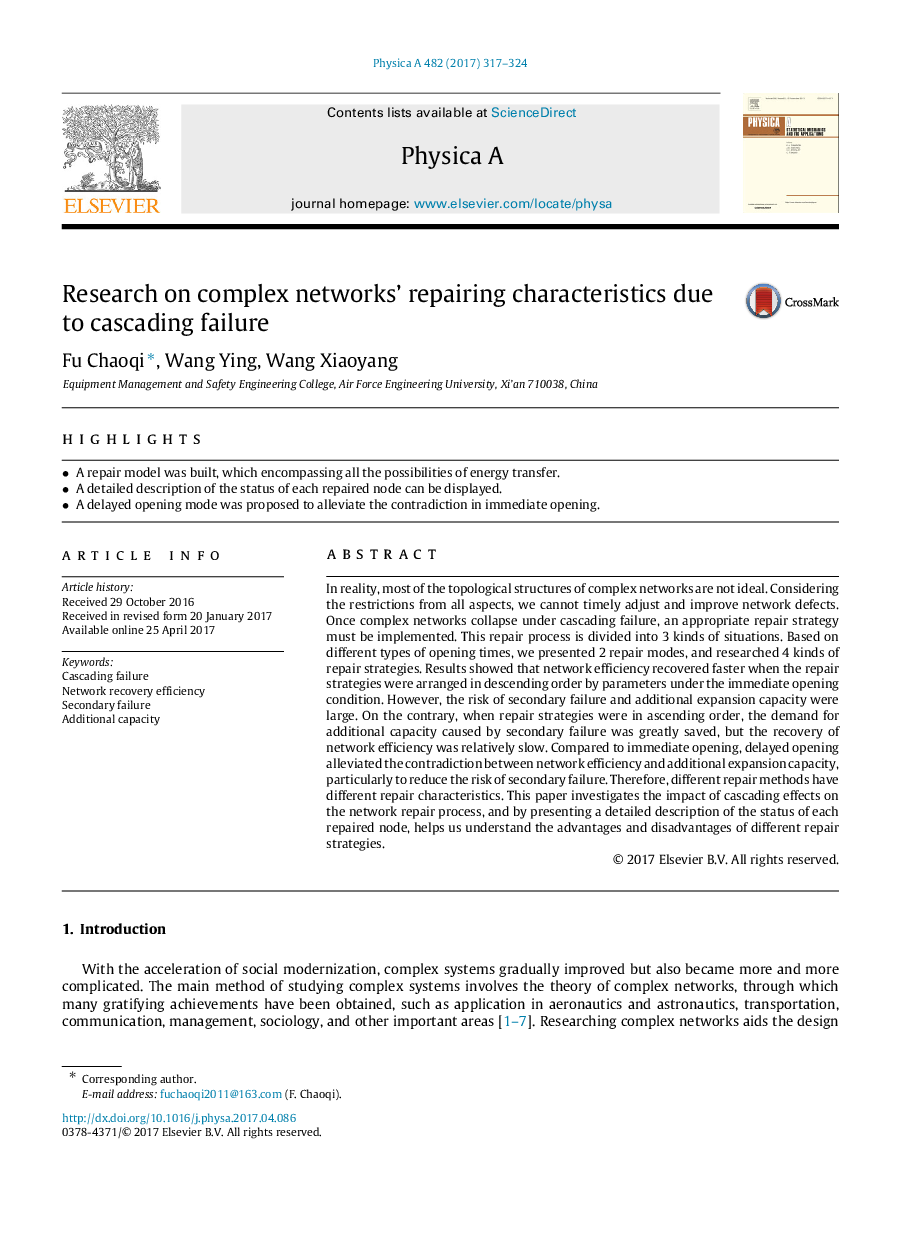| Article ID | Journal | Published Year | Pages | File Type |
|---|---|---|---|---|
| 5102865 | Physica A: Statistical Mechanics and its Applications | 2017 | 8 Pages |
Abstract
In reality, most of the topological structures of complex networks are not ideal. Considering the restrictions from all aspects, we cannot timely adjust and improve network defects. Once complex networks collapse under cascading failure, an appropriate repair strategy must be implemented. This repair process is divided into 3 kinds of situations. Based on different types of opening times, we presented 2 repair modes, and researched 4 kinds of repair strategies. Results showed that network efficiency recovered faster when the repair strategies were arranged in descending order by parameters under the immediate opening condition. However, the risk of secondary failure and additional expansion capacity were large. On the contrary, when repair strategies were in ascending order, the demand for additional capacity caused by secondary failure was greatly saved, but the recovery of network efficiency was relatively slow. Compared to immediate opening, delayed opening alleviated the contradiction between network efficiency and additional expansion capacity, particularly to reduce the risk of secondary failure. Therefore, different repair methods have different repair characteristics. This paper investigates the impact of cascading effects on the network repair process, and by presenting a detailed description of the status of each repaired node, helps us understand the advantages and disadvantages of different repair strategies.
Keywords
Related Topics
Physical Sciences and Engineering
Mathematics
Mathematical Physics
Authors
Fu Chaoqi, Wang Ying, Wang Xiaoyang,
